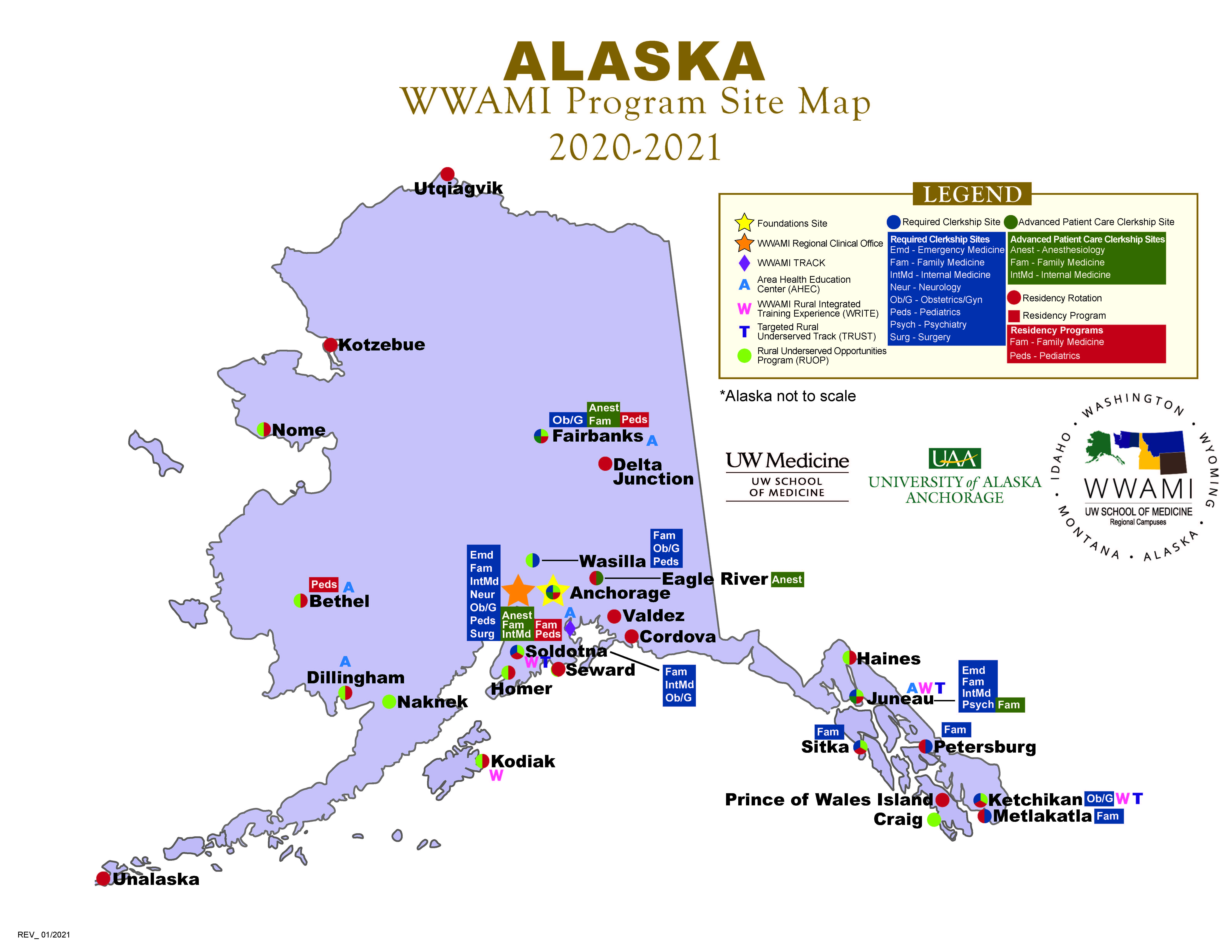About the WWAMI Program
WWAMI allows Alaska’s medical students to train all four years in their home state, with their first two years on the University of Alaska, Anchorage campus. Alaska offers a variety of quality learning opportunities in rural and community practices throughout the state. Alaska's remoteness from the "lower forty eight" necessitates a more comprehensive health infrastructure and capacity than is usually found in rural areas. Alaska's vast distances create challenges in the delivery of health services providing unique opportunities for medical care increasing the student’s familiarity with rural Alaska, as well as the health care needs of their region and state. This increases the likelihood that students will select further training or practice opportunities in Alaska once their training is complete.
After completing their second year of training at the University of Alaska, Anchorage, the students have the opportunity to complete their clinical training requirements in Alaska or at any of the regional sites.
The WWAMI Medical Program is dedicated to helping prepare physicians for primary care practice, regardless of eventual sub-specialty selection, and to increasing the number of physicians who choose to practice in rural or underserved areas. There is also a strong commitment to the partnership between excellence in research and teaching in medical education. Cutting-edge research prepares the next generation of doctors to be well informed and at the forefront of clinical medical practice. The WWAMI faculty at the University of Alaska Anchorage and the clinical faculty for clerkships throughout the state of Alaska, including our rural training communities, are committed to being both dynamic teachers and informed biomedical scholars.
WWAMI is a medical school program, not a premedical program. Students who enter the
program are dual enrolled at the University of Alaska and the University of Washington
School of Medicine and complete their foundations phase (18 months) of medical school.
This includes seven blocks and three threads taught by Clinical Skills Instructors
and Foundations Guides, both on campus and in the community. The curriculum at each
WWAMI site has been standardized and is compatible with the University of Washington
School of Medicine curriculum which integrates the basic and clinical sciences and
includes rural health care at an early time in medical education.









